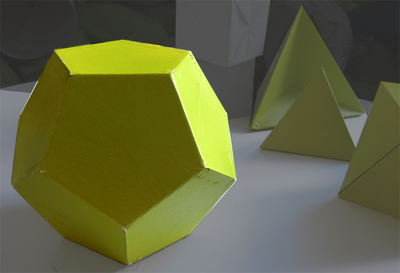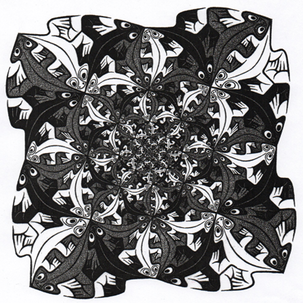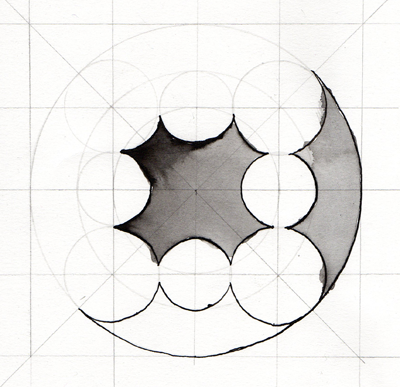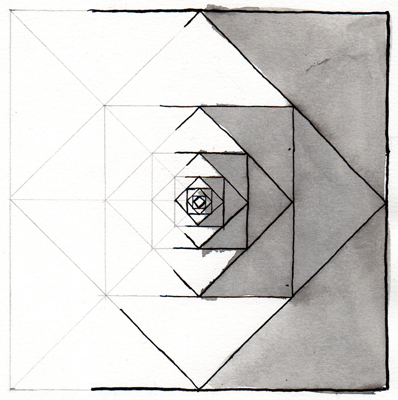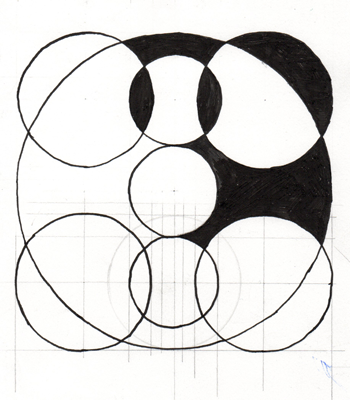The Diferrence between to see and to look
 Platonic Solids
Platonic Solids
Art is a deep process: it is like travelling between worlds – the “Real World”, the “Subconscious World”, the “Fantasy World”, the “Conceptual World”, etc. We have so many “places” where we can go, explore and absorb from, that sometimes we may lose something very important in all this intense process… the way we see things. And what is that: the way we see things?
«The way we see things is affected by what we know or what we believe. » John Berger
As we grow up, our intellectual knowledge normally comes over our perceptional knowledge. It’s a normal process – the more we know, the more we use this knowledge – but it’s also very important to observe what it’s in front of us. How many times did we look at something and didn't see a detail on it?
John Berger approaches this subject on his book “Ways of seeing”. There is a difference between looking at something and seeing something. To look is something broadly, like an overview and to see is to connect your vision with a subject. The vision is the most used sense and also the one which brings more information to our brain. I don’t want to depreciate the other senses, because all of them have his role in this “Highway of information”, still when a person has all 5 senses, the vision is the one used the most.
The brain is being constantly filled with visual information. In order to process it quickly, it will give priority to the “new information”, whereas what he regards as “old information” will be placed on the shelf – it is saved and already studied information. What and how we learn at school and during our lives just accentuates this process: we reduce our analysis with already acquired knowledge.This process may be good and efficient in some situations, but may as well be superficial, even deceiving. In a world always changing or transforming, nothing always stays the same.
«Dans la nature rien ne se crée, rien ne se perd, tout change. » Antoine Lavoisier
That leads us to a paradox because in one hand the brain organizes subjects that he believes to know and in the other hand everything suffer changes. What to do?
For this question, maybe, we have an answer: If Nature is a continuous process we have to stop organizing information and change the way that we see into nature. This changing process must be a reality and not an obstacle.
«The way we see things is affected by what we know or what we believe. » John Berger
As we grow up, our intellectual knowledge normally comes over our perceptional knowledge. It’s a normal process – the more we know, the more we use this knowledge – but it’s also very important to observe what it’s in front of us. How many times did we look at something and didn't see a detail on it?
John Berger approaches this subject on his book “Ways of seeing”. There is a difference between looking at something and seeing something. To look is something broadly, like an overview and to see is to connect your vision with a subject. The vision is the most used sense and also the one which brings more information to our brain. I don’t want to depreciate the other senses, because all of them have his role in this “Highway of information”, still when a person has all 5 senses, the vision is the one used the most.
The brain is being constantly filled with visual information. In order to process it quickly, it will give priority to the “new information”, whereas what he regards as “old information” will be placed on the shelf – it is saved and already studied information. What and how we learn at school and during our lives just accentuates this process: we reduce our analysis with already acquired knowledge.This process may be good and efficient in some situations, but may as well be superficial, even deceiving. In a world always changing or transforming, nothing always stays the same.
«Dans la nature rien ne se crée, rien ne se perd, tout change. » Antoine Lavoisier
That leads us to a paradox because in one hand the brain organizes subjects that he believes to know and in the other hand everything suffer changes. What to do?
For this question, maybe, we have an answer: If Nature is a continuous process we have to stop organizing information and change the way that we see into nature. This changing process must be a reality and not an obstacle.
Exercise with Escher Prints
Examples of Geometric Fractals

